30 Unusual Things And Places You Won’t Believe Existed In India
Travelling in India is like a roller-coaster ride, thrilling and unforgettable. India has something to offer to every traveller: scenic beauty, beaches, mountains, fauna, adventure sports, luxury hotels, historical monuments, a cultural treat for all the senses... The experience will leave you a little exhausted; because in every moment, there's so much to live.
If you think you've seen everything there is to see, you couldn't be more wrong. India isn't called Incredible India for nothing. This wonderful land is riddled with more mysteries and astonishing things than Alice or Dorothy could ever have imagined.
Sometimes uncanny and sometimes uplifting, India is full of surprises. Every corner of this wonderland has something waiting to be unraveled, just like these:
1. Levitating Stone - Shivapur, Maharashtra
Somewhere in Pune, in a quaint little hamlet called Shivapur, lies the Hazrat Qamar Ali Darvesh that has a magical story to tell. The current shrine was a gymnasium, 800 years ago. A Sufi saint called Qamar Ali was taunted by the wrestlers there. The saint placed a spell on the rocks that were used for body-building. The 70 kg rock can only be lifted by 11 finger tips touching it and calling out his name loudly. Till date, the Stone of Qamar Ali can be magically lifted by chanting his name!
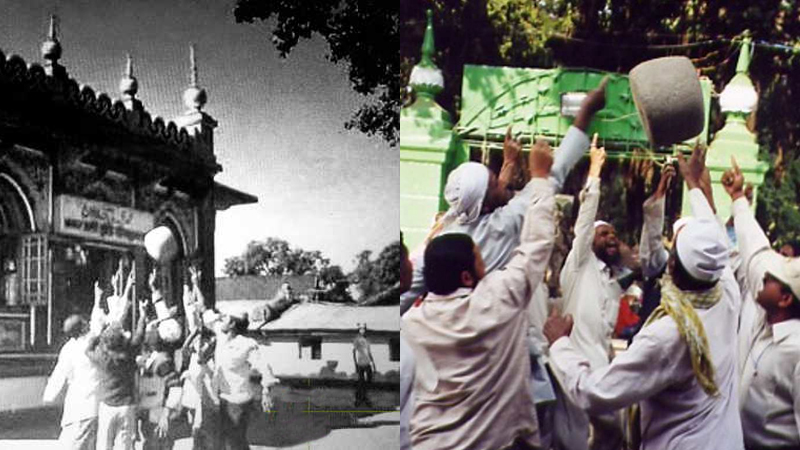
2. Land of Black Magic - Mayong, Assam
A cloak of mystery shrouds Mayong, better known as the Land Of Black Magic, a village 40 kms from Guwahati city, close to Pobitora Wildlife Sanctuary. It is popularly believed that the name Mayong comes from the Sanskrit word for illusion, Maya. Many tales of men disappearing into thin air, people being converted into animals, or beasts being magically tamed, have been associated with Mayong. Sorcery and magic were traditionally practised and passed down over generations. Many ancient relics of Ayurveda and black magic are now preserved in the Mayong Central Museum.
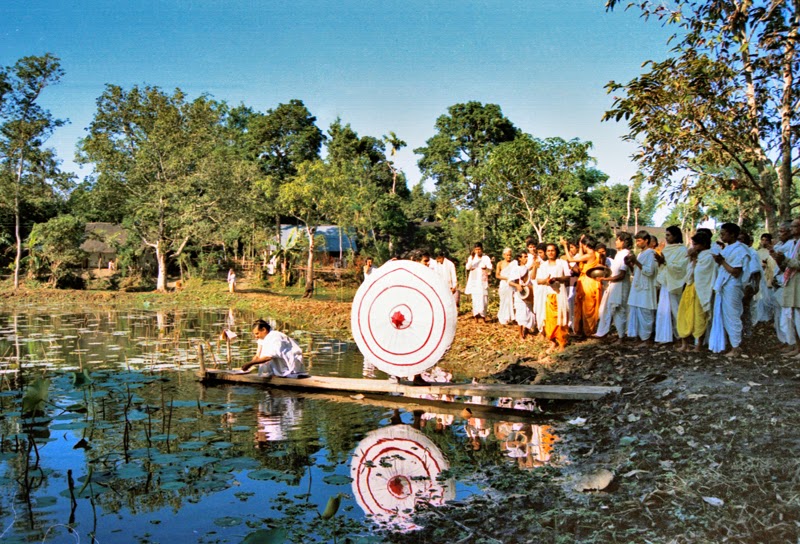
3. Lake of Skeletons - Roopkund Lake, Chamoli, Uttarakhand
At a height of 16,500 feet, in the middle of the most uninhabitable part of the Himalayas lies the secluded Roopkund Lake, covered in snow and surrounded by rock-strewn glaciers. More popularly known as Skeleton Lake or Mystery Lake, the spine-chilling attraction of this lake is the 600 odd human skeletons that were discovered here. These date back to the 9th CE and are clearly visible at the bottom of the shallow lake when the snow melts. The locals believe that this entourage had earned the fury of the local deity, Latu, who sent a terrible hailstorm their way, which eventually killed them.

4. Mass Bird Suicide - Jatinga, Assam
The idyllic village of Jatinga is snugly nestled amongst the Borail Hills of Assam. Every monsoon, this scenic village witnesses an uncanny phenomenon. Between September and October, especially during dark and foggy nights, hundreds of migratory birds fly full speed towards trees and buildings, crashing to death. This 'mass bird suicide' was first brought to global attention by famous naturalist E.P. Gee in the 1960s. Ever since, it has remained one of the world's unsolved mysteries.
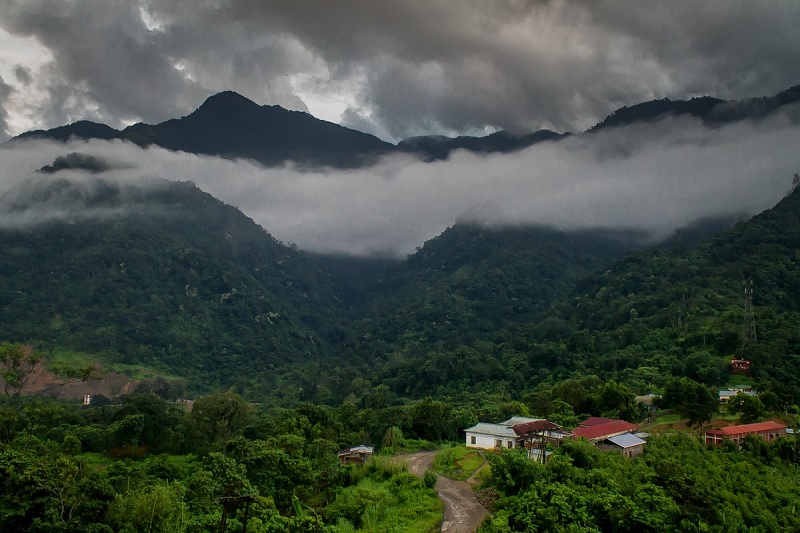
5. The Curious Case Of Twins - Kodinhi (Kerala) and Umri (near Allahabad)
Kodinhi, a sleepy little town tucked away in the Malappuram district of Kerala, has managed to baffle scientists across the world. In a population of 2000, Kodinhi has 350 pairs of identical twins! It has rightfully earned the title of 'Twin Town.' 6 pairs of twins in every 1000 births is considered a high twinning rate. Kodinhi has a rate of 42 twins per 1000 births. This means, almost every family in Kodinhi has more than one pair of twins!
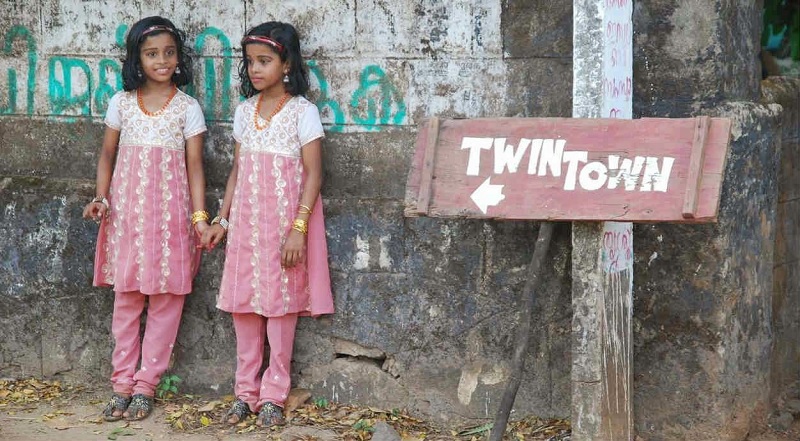
Mohammedpur Umri village, near Allahabad has a similar tale to tell. With over 60 pairs of identical twins in a total population of 900, Umri's twinning rate is 300 times the national average, and perhaps the highest in the world. Researchers believe that the cause might lie in the genes, but for others, it is the divine hand.
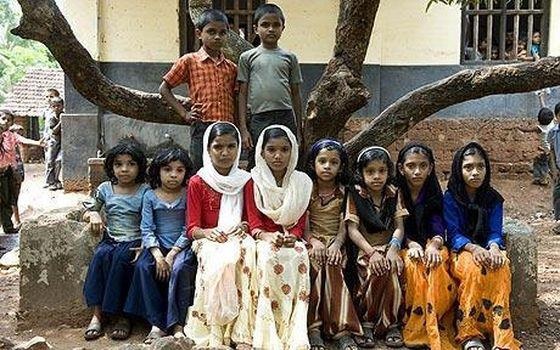
6. Get pulled uphill by magnetic force - Magnetic Hill, Ladakh
At an altitude of 11000 feet above sea level, Magnetic Hill is one of the must-see things on the way to Leh. It is known to have magnetic power that can pull a car towards itself even when the ignition is off. It is a thrilling experience, but in reality, it is only an optical illusion caused by gravity hill. Magnetic Hill is one of the world's recognized gravity hills.
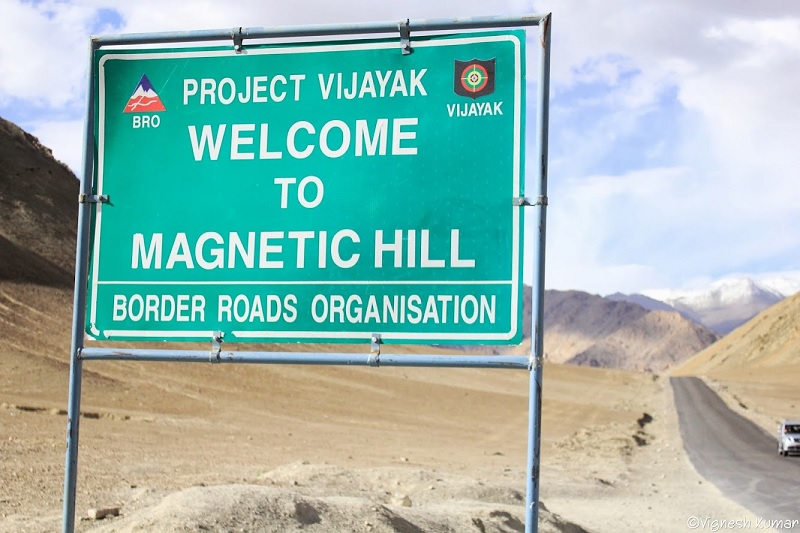
7. Home to the notorious Cream - Malana, Himachal Pradesh
Located in the north-east of the Kullu Valley, Malana is also known as the 'Little Greece of India', because the locals believe that they are descendants of Alexander-the-Great himself! This ancient village is cut off from the rest of the world, and they follow an indigenous political system. There are only about a hundred houses in this village, but it is home to Malana Cream, the finest quality and most potent charas ever produced.
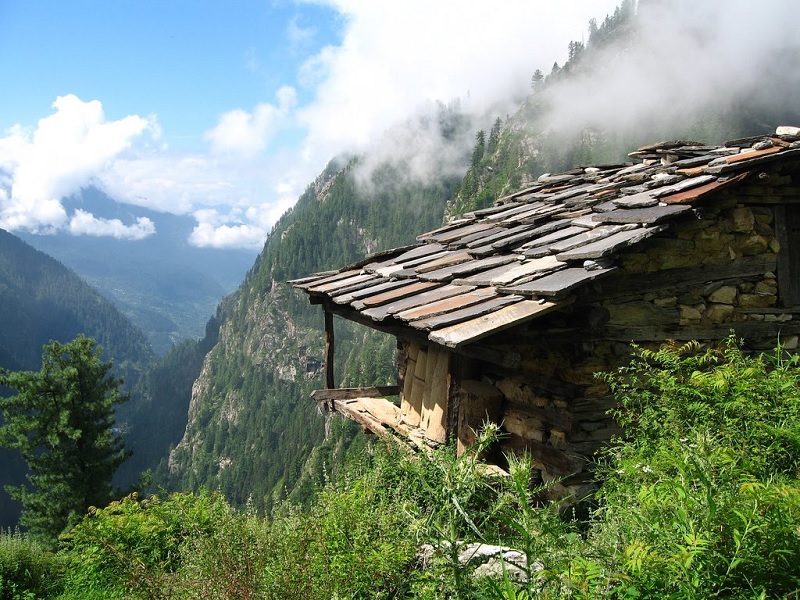
8. Asia's Cleanest Village - Mawlynnong, Meghalaya
Mawlynnong Village in Cherrapunji is popularly called 'God's Own Garden.' It has won international accolades for being Asia's Cleanest Village. It is a community-based effort for promoting eco-tourism. It is interesting to note that this village has a 100% literacy rate and most villagers speak English fluently. Mawlynnong boasts of other amazing sights like waterfalls, Living Roots Bridge and a Balancing Rock.
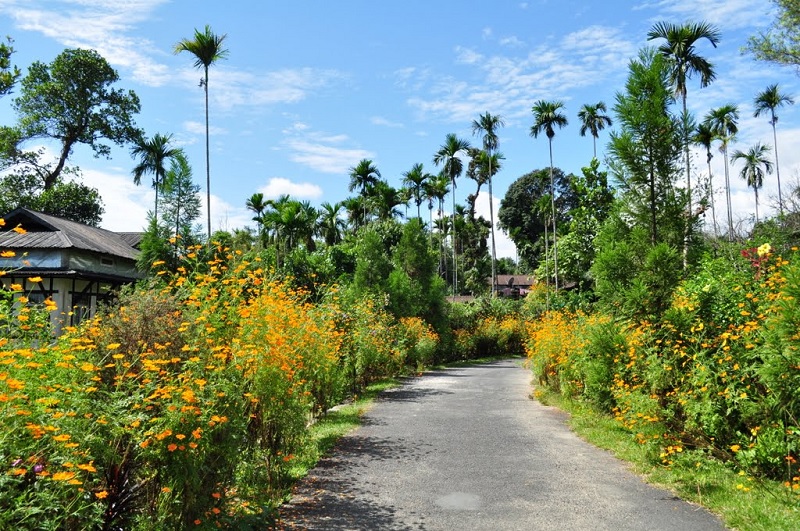
9. Village Without Doors - Shani Shignapur, Maharashtra
Located 35 kms from Ahmednagar, Maharashtra, Shani Shinagpur village is known for its popular Shani temple. This village has never witnessed any crime, and that is attributed to the blessings of Shani Dev. The villagers have full faith in their god, and have completely entrusted their safety into his hands. That is why homes and commercial buildings in this village has no doors, or even a door frame. Taking note of the near-zero crime rate, the UCO Bank has also opened a 'lock-less' branch in this village, the first of its kind in India.
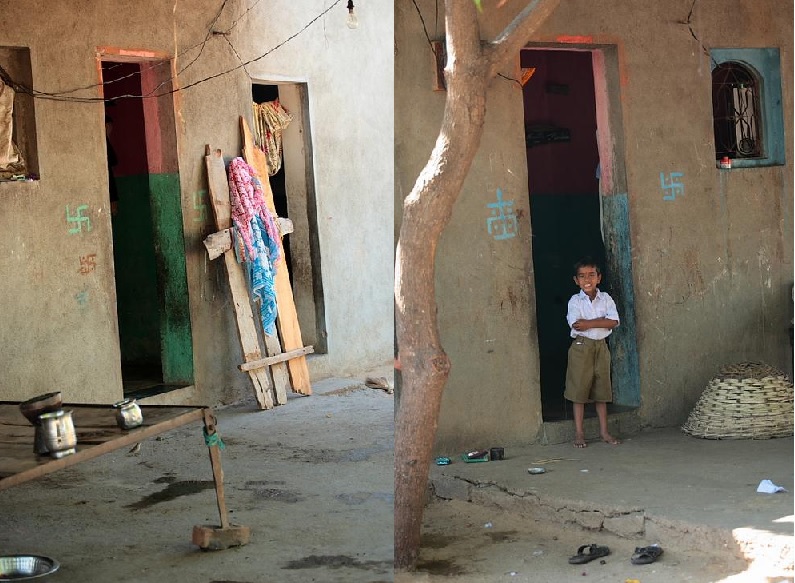
10. Temple Of Rats - Karni Mata Temple, Rajasthan
A little town called Deshnok, 30 kms from Bikaner, holds an intriguing sight: the Karni Mata Temple, home to over 20,000 rats. 'Kabbas' as they are called, these rats are worshipped because it is believed that they are reincarnated family members of Karni Mata. White mice are revered even more because they are considered to be Karni Mata and her sons.
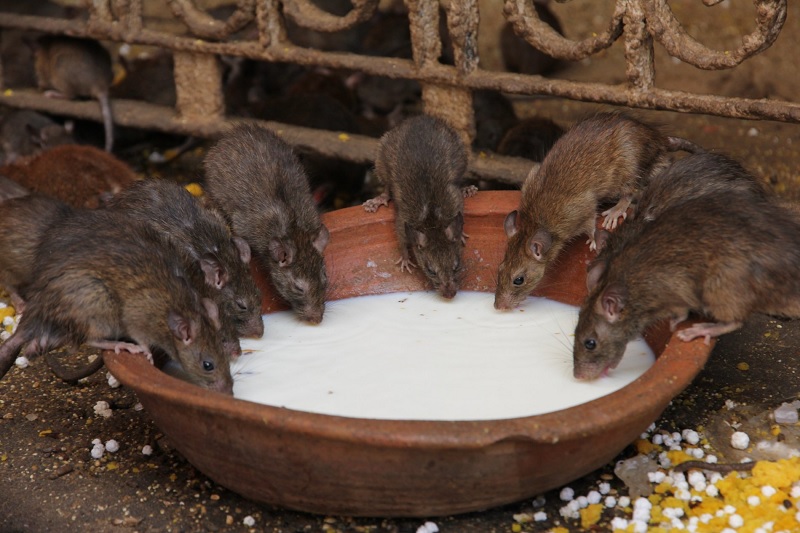
11. Land of Snakes - Shetpal, Maharashtra
Shetpal village in Sholapur district of Maharashtra, is known for snake worship. This village has a custom that can be only described as frightful. Each house in this village has a resting place for Cobras in the rafters of their ceilings. No cases of snake bites have been reported in this village despite snakes moving about freely in every household.

12. Dining with the Dead - New Lucky Restaurant, Ahmedabad
Now, here's something that is morbid and fascinating at the same time. The New Lucky Restaurant has an ambience to kill for. This coffee house is built on a centuries-old Muslim cemetery. The graves lie between the tables, and are said to belong to a 16th CE Sufi saint. The restaurant is always bustling with guests and the owner says that the graves are his lucky mascots.
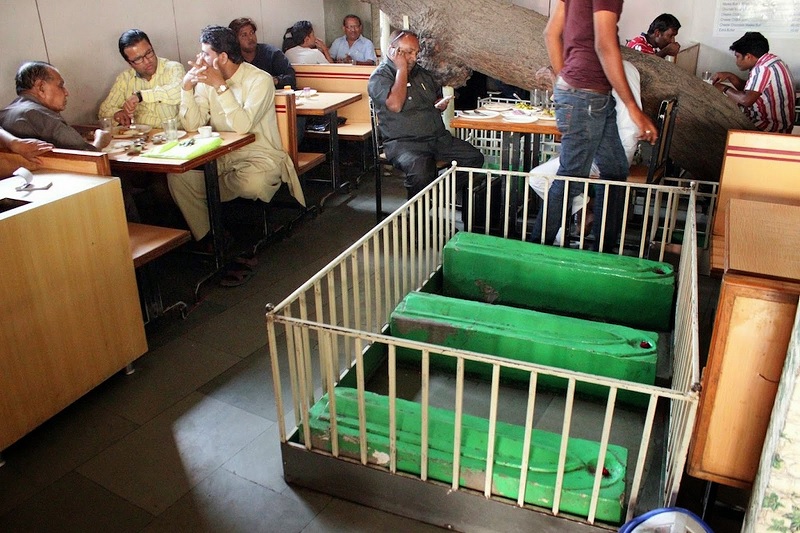
13. India's Highest and Most Tragic Waterfall- Nohkalikai Falls, Meghalaya
At a height of 1115 feet, the Nohkalikai Falls near Cherrapunji is India's highest plunge waterfall. Fed naturally by rainwater, this waterfall is named after the tragic tale of a woman called Ka Likai. After the death of her husband, Ka Likai remarried. But her new husband was extremely jealous of her love for her daughter. He murderd the daughter, and to hide the evidence, cooked up her remains into a meal. Kali Kai searched high and low for her daughter but cannot find her. Her husband offers her the meal, as she is exhausted. After eating, she discovers to her horror, the daughter's fingers lying in basket filled with betel-nuts. Grieved and anguished, she throws herself off the cliff, giving the waterfall its name, 'Nohkalikai' meaning 'Fall of Ka Likai.'
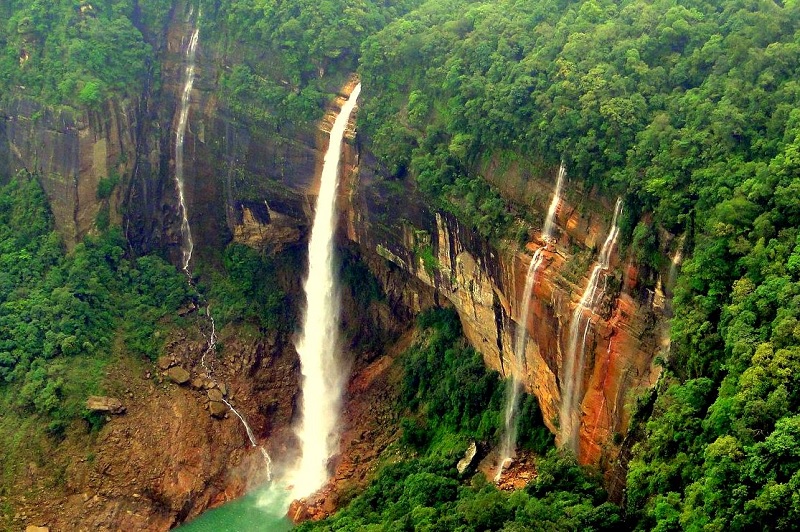
14. Hanging Pillar - Lepakshi, Andhra Pradesh
The small historical village of Lepakshi is home to many ancient relics and architectural marvels. One of them is the Hanging Pillar of the Lepakshi temple. Amongst the 70 pillars of the temple, one hangs without any support! Visitors pass objects under the pillar to check if the claim is true. According to locals, passing objects under the pillar brings prosperity to one's life.

15. World's largest River Island - Majuli, Assam
Located on the mighty Bramaputra, Majuli, the world's largest river island, is a celebration of the creations of God and man. The scenic beauty of this island is the closest one can feel to the heavens. Majuli is also a popular cultural hotspot for various schools of thought that propagate the teachings of Srimanta Shankardev.
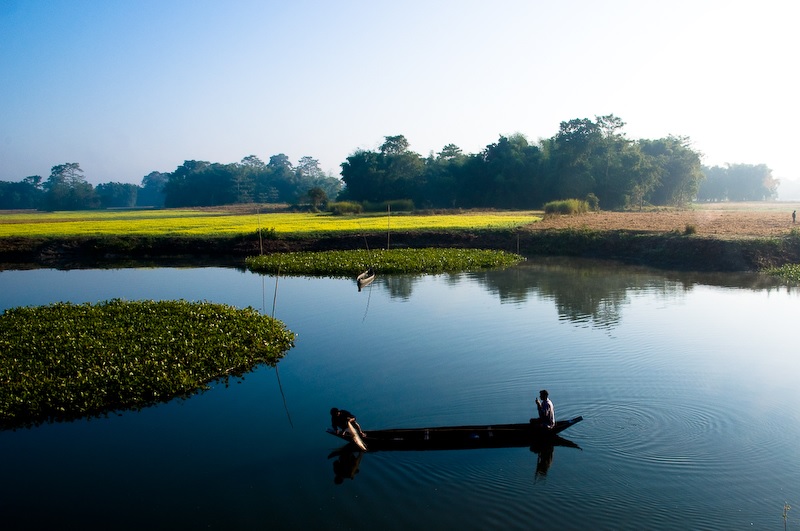
16.The Eternal Flame - Jwala Ji Temple, Kangra
Throughout the year, people visit the Jwala Ji Temple of Kangra to seek blessings from the Goddess. In the centre of the temple, a hollowed stone holds a flame that has been burning for hundreds of years. According to the legend, Lord Shiva's wife, Sati, immolated herself in anguish when her father disrespected her husband. A furious Shiva danced the Tandav Nritya carrying the burnt corpse. In doing so, she fell into 51 parts and landed on the earth. Each of these locations turned into a religious shrine for the Hindus. The Jwala Ji of Kangra is believed to be Sati's fiery tongue.
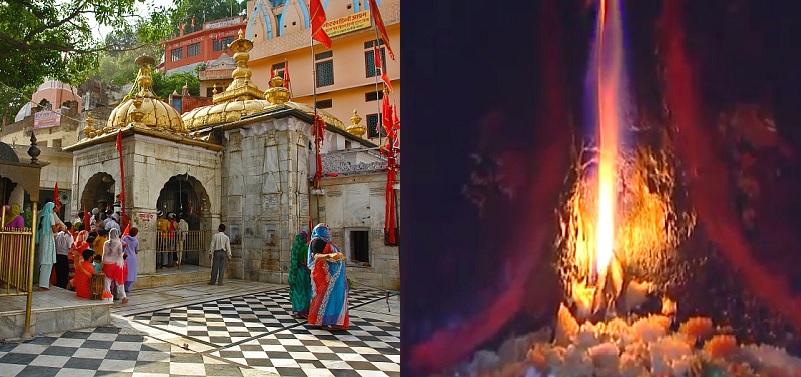
17. Natural Mummy of Sangha Tenzing - Gue Village, Spiti
If you thought mummies were to be found only in Egypt, you are mistaken. In a little village called Gue, in Himachal's Spiti district, lays the remarkably well-preserved 500 year-old mummy of Sangha Tenzing, a Buddhist monk from Tibet. It was found in a sitting position, with skin and hair intact. This is probably because, the monk started mummifying himself while he was still alive. Natural mummification, as compared to chemical enbalming, is a complex procedure and is extremely rare. The mummy was discovered after an earthquake in 1975. It is now on display at a temple in Gue.
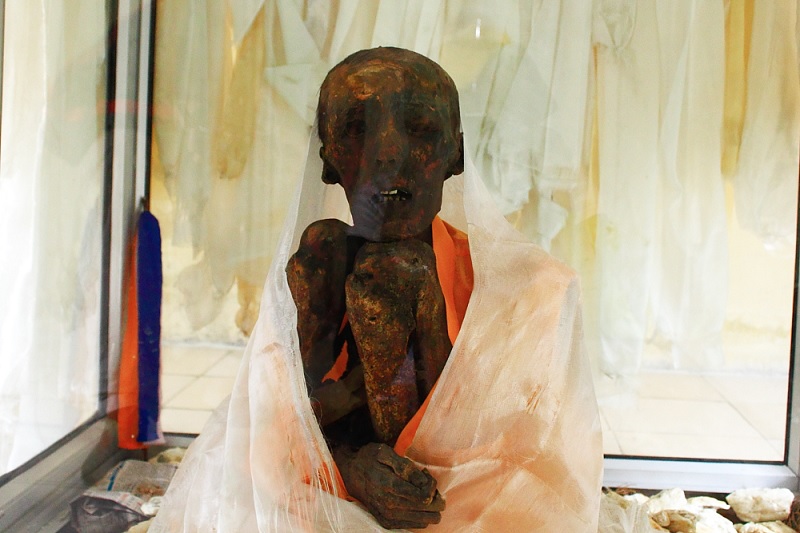
18. World's Highest Tea Estate - Kolukkumalai, Tamil Nadu
Kolukkumalai Tea Estate is an hour and half long drive from Munnar. Towering at a height of 8000 feet above sea level, this tea estate rises above the plains of Tamil Nadu, heralded by beautiful rugged mountains on all sides. It's hard to decide which is more breath-taking: the scenic landscape or the flavourful teas produced here.
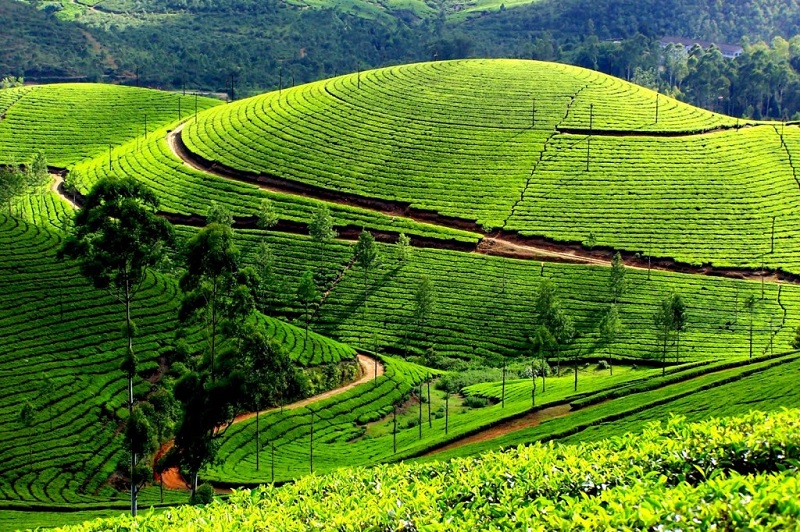
19. The Motorcycle God - Bullet Baba Shrine, Bandai, Rajasthan
If there is any place in the world where you'll come across a shrine where flowers and liquor bottles are offered to a motorcycle, it has to be in India! At Bandai, Jodhpur, Om Singh Rathore died when he crashed his Bullet into a tree while riding drunk. The police claimed the bike and took it to the station. The next day, the bike was found at the spot of the accident. They brought it back to the station, emptied the fuel tank and chained it. Yet the bike miraculously found its way back to accident spot the next day. The motorcycle was moved permanently to the location and the Om Baba (or Bullet Baba as it is popularly called) Shrine was erected. Every day many passers-by come to offer their prayers. The spirit of Om Banna is believed to protect travellers.
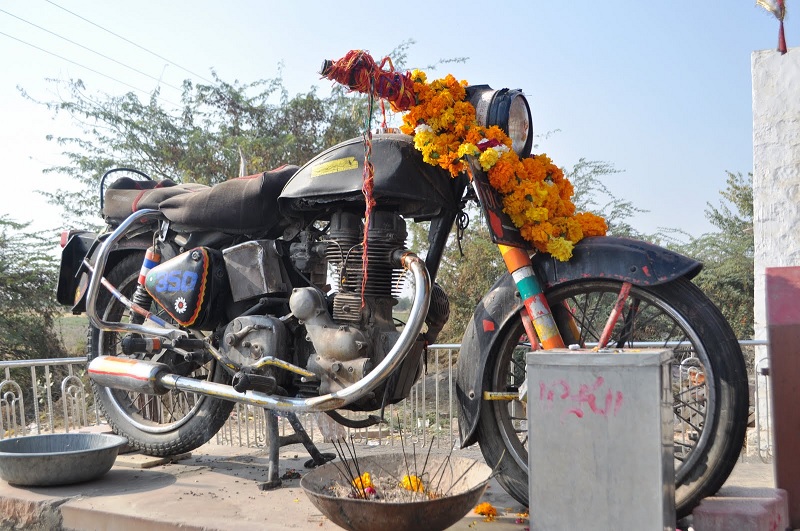
20. World's Largest Monolithic Statue - Gomateshwara Statue, Shravanabelagola, Karnataka
The monolithic statue of Gomateshwara, also known as Bahubali, at Shravanabelagola, towers above all else at 60 feet. Carved out of a single block of granite, it is so large, it can be seen even from 30 kms away. Gomateshwara was a Jain saint, who according to legend, was the first human in his half time cycle to attain liberation. The monolith was built by Chamundaraya, a minister of the Ganga Dynasty between 978 and 993 CE and is one of the most important pilgrimage sites for Jains across the world. Standing at the feet of this massive monolith, looking up, you'll understand how big the world really is, and how small we are in comparison.
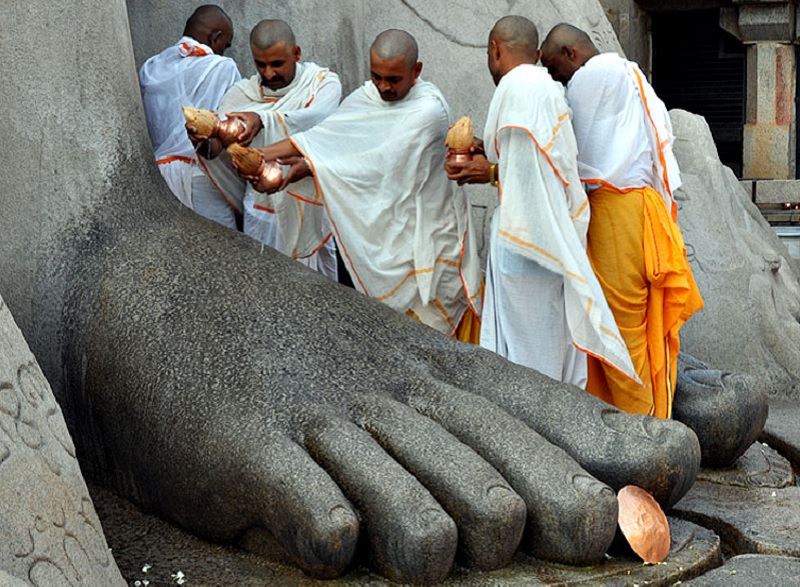
21. Half-Sized Taj Replica - Bibi Ka Maqbara, Aurangabad
They say imitation is best form of flattery. The 'Mini Taj' proves the point. Built in the late 17th CE, within less than 30 years of its original inspiration, this modest monument has often been called 'Poor Man's Taj.' It was commissioned by Aurangzeb and built by one of his sons, Prince Azam Shah, in memory of his mother, the Emperor's first wife. Though it fades in comparison to its majestic inspiration, the Bibi Ka Maqbara emanates a certain charming humility.
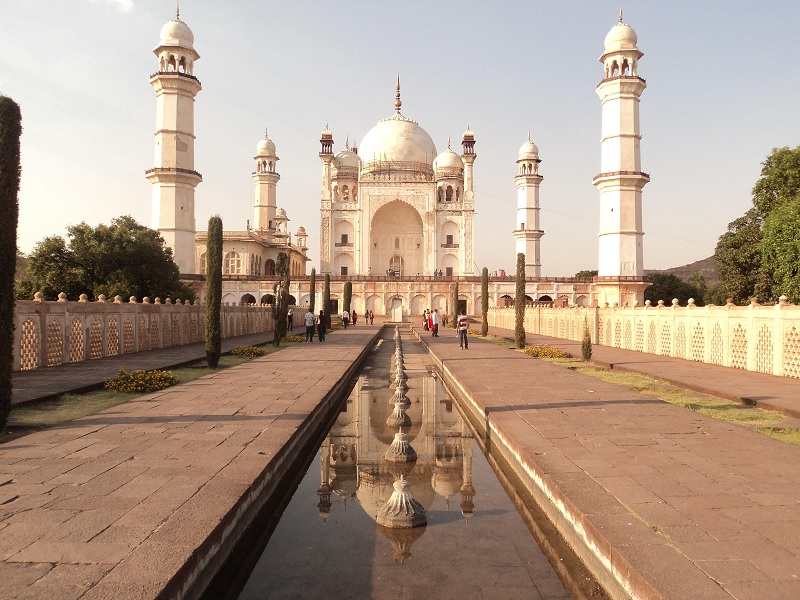
22. Living Roots Bridge - Cherrapunji, Meghalaya
In Cherrapunji, Meghalaya, man has befriended nature and cajoled it into bending to his ways. People build bridges, but the Khasis of Meghalaya, they grow bridges. Ficus Elastica or the Rubber Tree produces strong secondary roots from their trunks. These have been trained to grow in a particular direction using betel-nut trunks, forming sturdy, living bridges over decades. Some of these bridges are more than a hundred feet long. The Umshiang Double Decker Bridge is truly one of a kind in the entire world. Some ancient root bridges are over 500 years old.
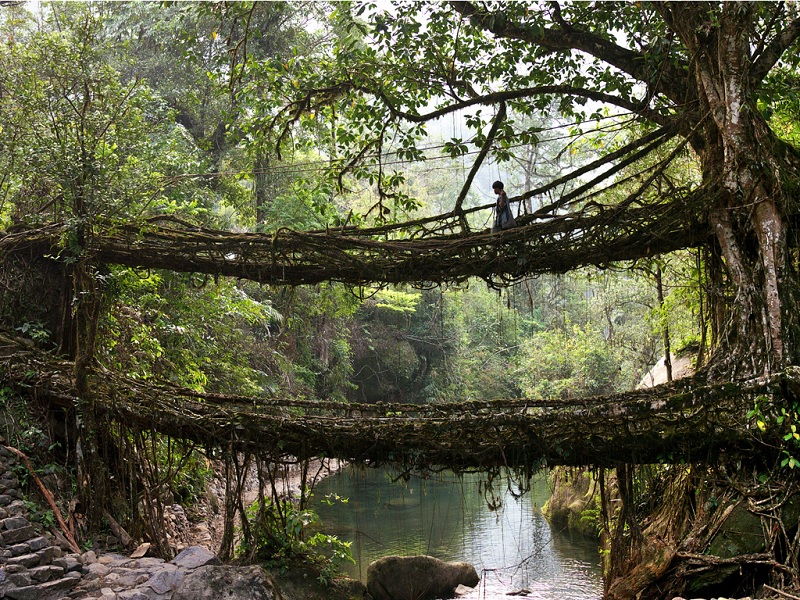
23. World's Widest Banyan Tree - Botanical Garden, Howrah
Near Kolkata, at the Acharya Jagadish Chandra Bose Botanical Garden, Howrah, lies another living proof nature's powerful glory. The 1250 year old Great Banyan Tree, with a canopy covering an area of 4 acres, is considered the widest tree in the world. After being struck by lightning, the tree was diseased. The trunk had to be removed in 1925. It continues to live without its main trunk, and has 3300 aerial roots reaching down to the ground. What appears to be a forest is actually one single tree. In his mind's eye, I'm sure this what Frost saw when he said, 'Lovely, dark and deep...'
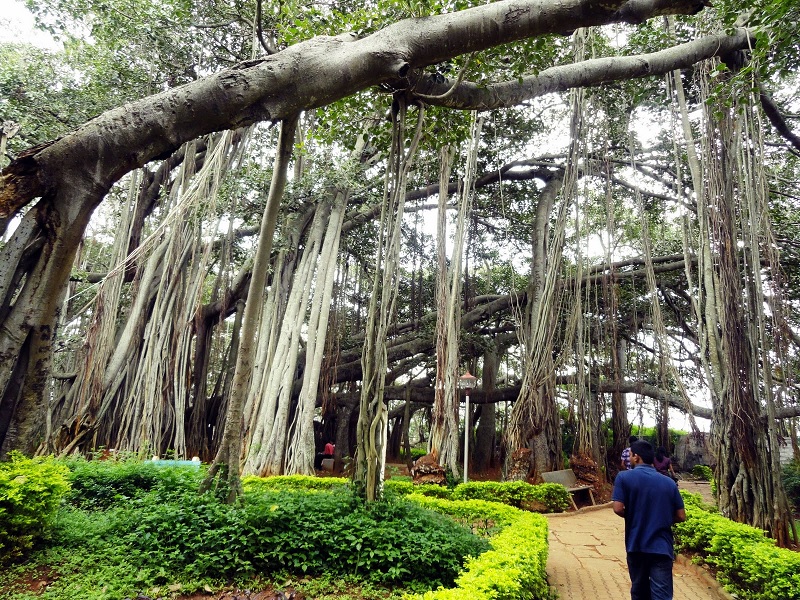
24. World's Only Floating Lake - Loktak Lake, Manipur
The largest freshwater lake in India's North-East, the Loktak Lake is a sight to behold. Because of its floating phumdis, it has been named the world's only floating lake. Apart from its scenic beauty, this lake plays a big role in Manipur's economy, serving as a source for hydropower generation, irrigation, drinking water supply and source of livelihood for local fishermen. The largest of all the phumdis, or floating islands on Loktak, is the Keibul Lamjao National Park, the last natural refuge of the endangered Manipur Brow-Antlered deer.
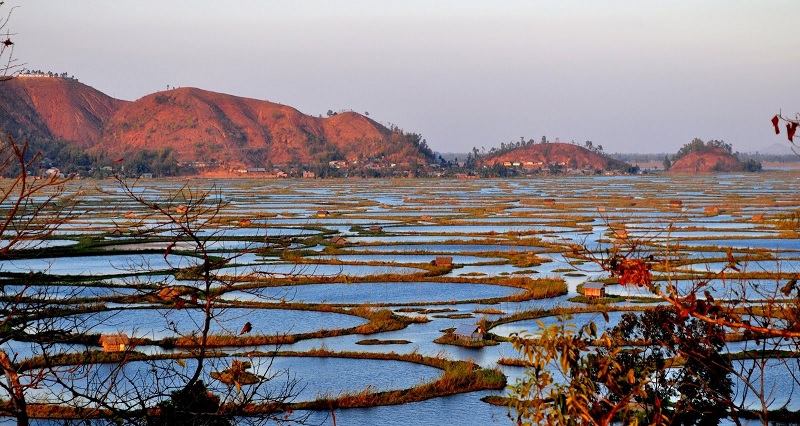
25. Dog Temple - Channapatna, Karnataka
A community in Channapatna's Ramanagar district has erected an unusual temple in honour of man's best friend. Pujas are conducted seeking blessings of the Dog God. According to locals, the dog is considered good-natured and loyal, but at times he is also formidable. This Dog God is believed to work alongside the village diety.
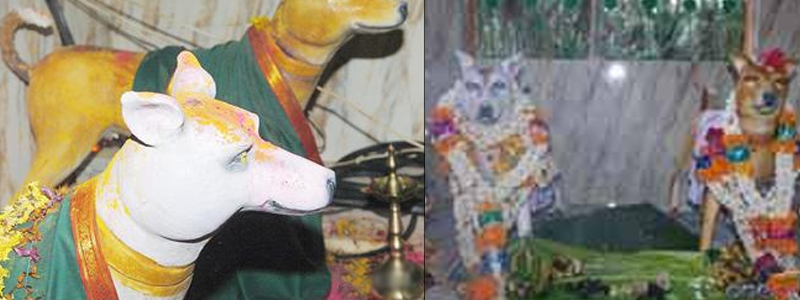
26. Gravity Defying Palace - Bada Imambara, Lucknow
This architectural wonder dates back to the 18th CE. Nawab Asaf Ud Daulah created this marvel, blending European and Arabic architecture in perfect harmony. The central arched hall is 50 metres long and about three stories high, hanging without the support of any pillars or beams! The main hall is known for the architecture of the labyrinth or bhul-bhulaiya, with more than 1000 narrow staircase passages. The Imambara complex also houses lush gardens, a spectacular mosque and a baoli.
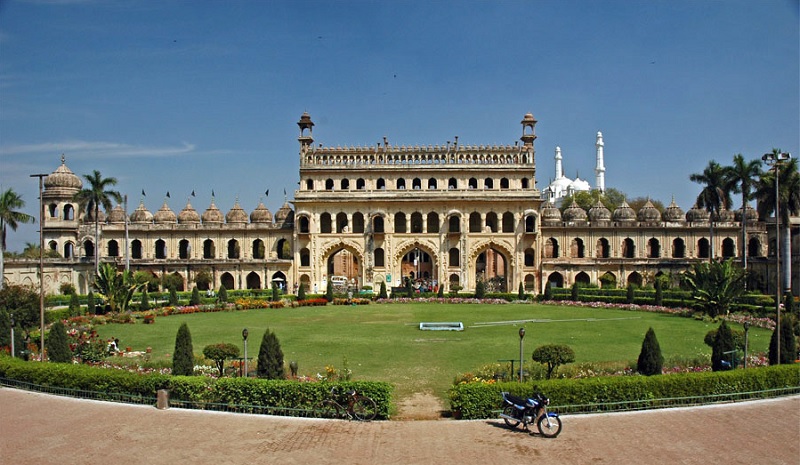
27. Floating Stones - Rameshwaram, Tamil Nadu
Located on Pamban Island, and separated from the Indian mainland by the Pamban Channel, the little town of Rameshwaram has great significance in Hindu mythology. It is from here that Rama is believed to have built a bridge across to Lanka to rescue Sita. Stones used to build this bridge had Rama's name engraved on them and they never sank in water. The curious fact is that such 'floating stones' are still found around Rameshwaram!

28. Red Rain - Idukki, Kerala
Apart from its delectable coastal curry, Idduki is also known for a strange phenomenon called 'Red Rain'. The first incident of Red Rain was recorded as early as 1818. Ever since, Idukki has witness this unusual sight intermittently. Idukki has been classified a 'Red Region'. In Hinduism, red rain is the wrath of the Gods, punishing sinners. It signals a wave of destruction and woe. Some believe the killing of innocents leads to red rain. Scientists are yet to come up with an explanation.
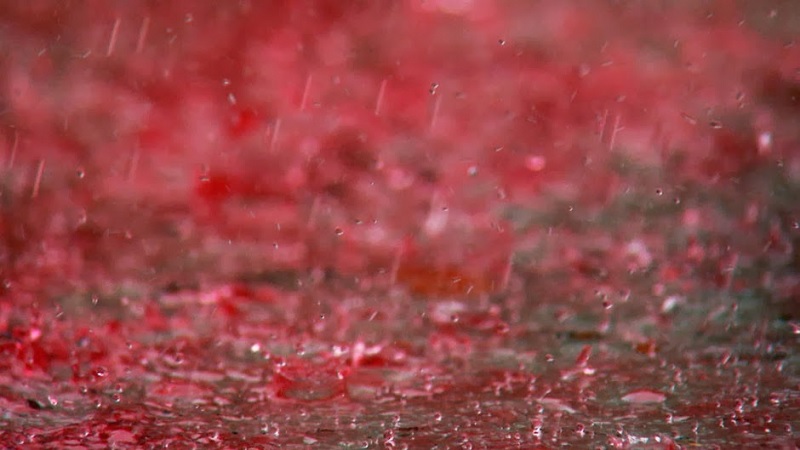
29. Rural Olympics - Kila Raipur, Ludhiana
During February every year, Kila Raipur village in Ludhiana is buzzing with energy. Locals and tourists come together to witness a recreational sports meet of farmers in and around Kila. The Rural Olympics was a brainchild of philantropist Inder Singh Grewal. It was conceived as early as 1933. Bullock racing, tent pegging, Gatka, camels, mules and dog races are the main attractions. Punjabi folklore and cultural festivities also grace the event, making it a truly exhilarating experience.
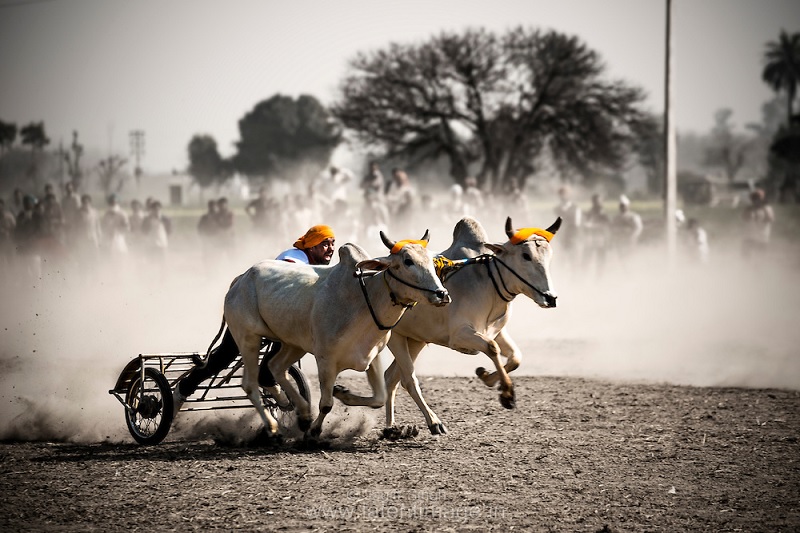
30. Temple of the Visa God- Balaji Temple, Chilkur, Hyderabad
Some Gods bring you prosperity, some grant you protection, but the 21st CE God of the Balaji Temple in Chilkur, on the outskirts of Hyderabad, has the power to grant you a Visa to the US! Now popular as Visa Balaji Temple, many dollar-driven people, even those from other religions, come here to take the blessings of Visa Balaji before their Visa interviews. If they get a visa, they must keep their vow and take 108 rounds of the inner shrine. Laugh if you want, but this is one admirable example of an old world existing in a new one.
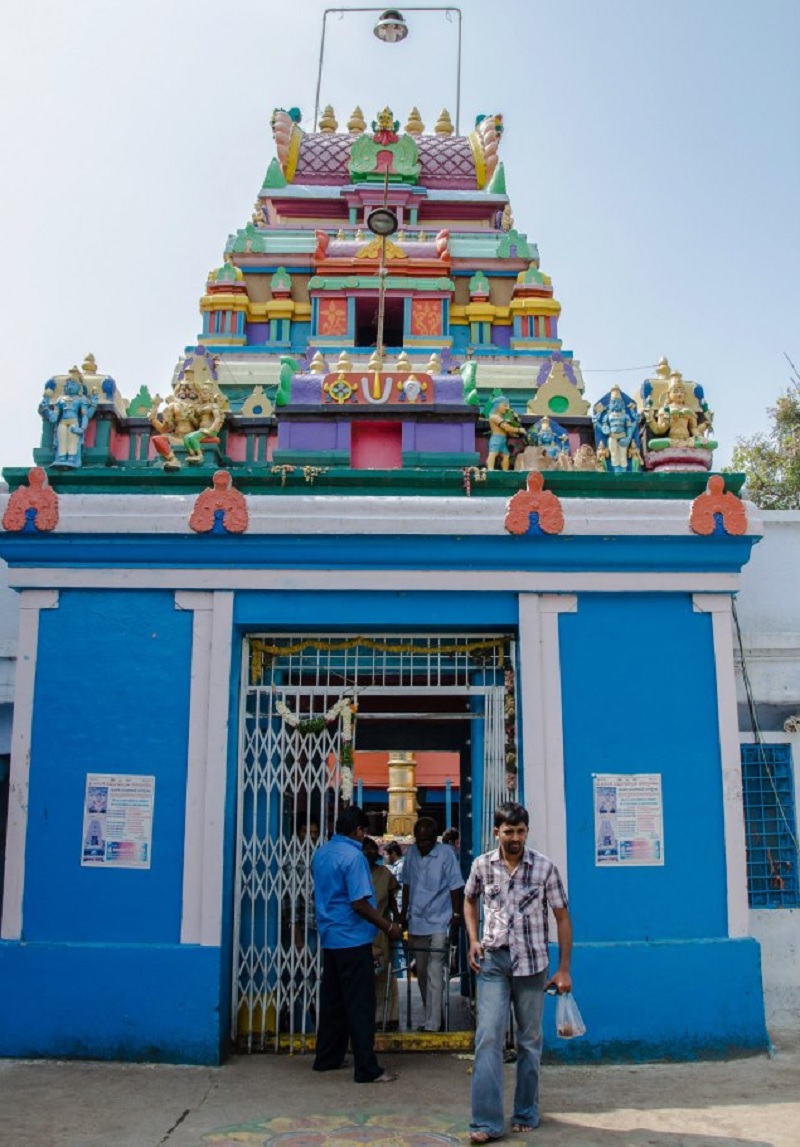
You May Be Interested IN